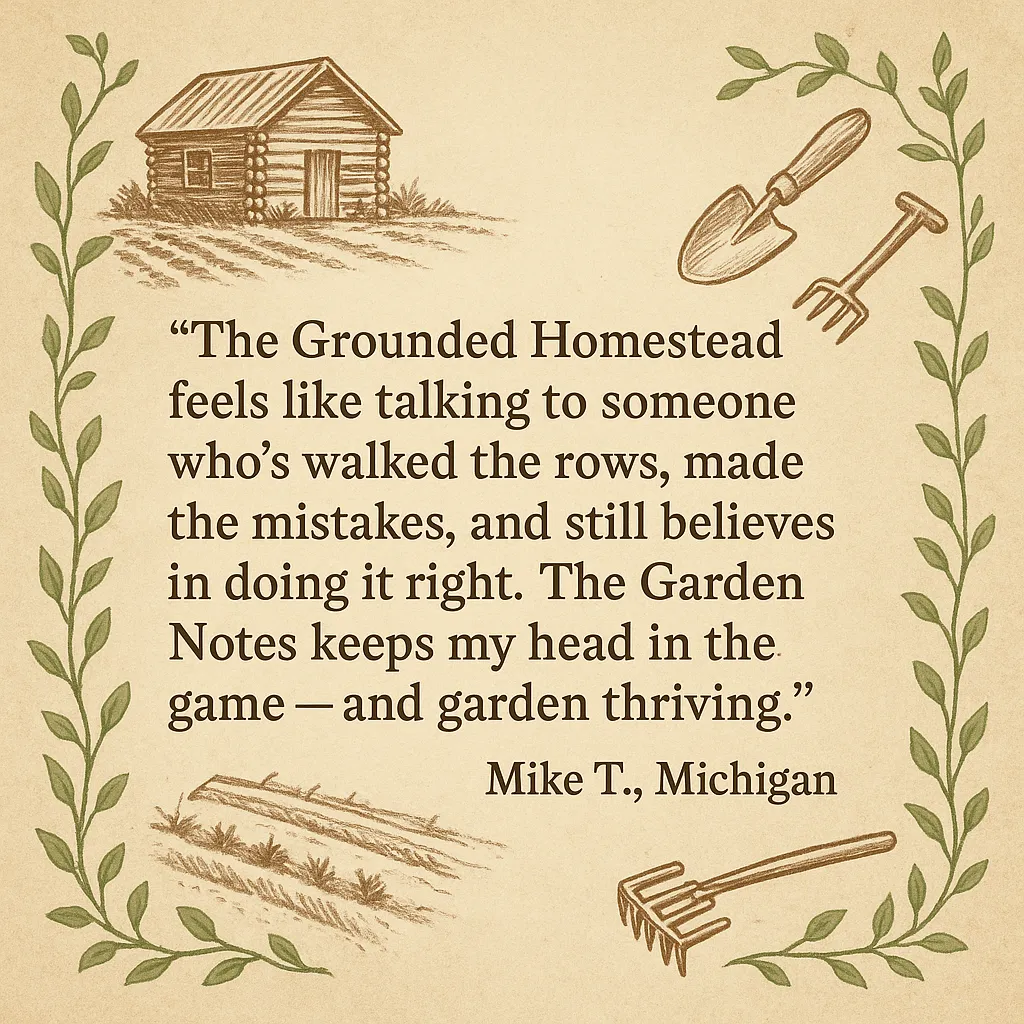
Tomato Feeding Guide: What to Add, When to Add It, and How to Avoid Overdoing It
Tomato Feeding Guide: What to Add, When to Add It, and How to Avoid Overdoing It
I once had the prettiest tomato plants on the block — deep green leaves, thick stems, full of promise. Then one day, they just... stopped. Flowers dropped. Leaves curled. Fruit? Barely any. I’d been too proud of how fast they were growing to notice I was overdoing it. More fish emulsion, more compost tea — more problems.
If you’ve ever wondered when to feed tomatoes, what to give them, or whether you’re doing too much or too little — this guide’s for you. What follows is a full-season feeding strategy that’s organic, beginner-friendly, and tested in the field (not just in theory).
Understanding What Tomatoes Actually Need
Tomatoes are hungry plants, but not all at once. They go through phases — just like we do. Feed the wrong thing at the wrong time, and you’ll get lush plants with no fruit or weak plants that can’t set anything at all.
The Big Three Macronutrients:
Nitrogen (N): Feeds leafy growth early on. Too much later = no fruit.
Phosphorus (P): Critical for roots and flower formation.
Potassium (K): Supports overall plant health, fruit set, and flavor.
The Unsung Micronutrients:
Calcium: Prevents blossom-end rot (you’ll thank yourself for this).
Magnesium, Sulfur, Boron, Zinc, Iron: Needed in small amounts — usually covered if your compost is solid.
Grandma’s Tip: “Too much of anything spoils the whole thing — tomatoes included.”
Start With the Soil: The Real Foundation
Before you think about what to add, check what you have. Healthy tomatoes start in healthy soil — loose, well-drained, and full of life.
Test your soil. Even a cheap DIY kit gives you a read on pH and basic nutrients.
Aim for pH 6.2–6.8. That’s the sweet spot for nutrient uptake.
Add organic matter. Compost, leaf mold, worm castings — these feed the microbes that feed your plants.
Grandma says: “You can’t fix bad soil with a bottle.”
Organic Feeding Tools: What to Use and When
I’ve tried a lot of fancy solutions. But these are the organic basics that work, year after year.
Compost: Your baseline. Mix into the soil and topdress later in the season.
Fish Emulsion: Great nitrogen boost in the early leafy stage. Dilute it — your nose will thank you.
Bone Meal: Adds phosphorus for strong roots and blooms.
Kelp Meal or Liquid Seaweed: Packed with micronutrients and stress-fighting compounds.
Crushed Eggshells: Slow-release calcium. Add to planting holes or brew as a tea.
Worm Castings: Mild and microbe-rich. Ideal for containers and seedlings.
Use what you’ve got. Don’t chase silver bullets.
Feeding by Growth Stage
🟢 Seedlings (Weeks 1–3)
Don’t rush it. Too much too soon stunts young roots.
Optional: Diluted worm tea or fish emulsion, once a week.
Use only in well-lit, actively growing seedlings — not for leggy starts.
🌱 Transplanting (Weeks 3–4)
Now’s the time to set your plants up for success.
Mix compost + 1 tablespoon bone meal into each planting hole.
Optional: Add mycorrhizal fungi for better root uptake.
🌿 Leafy Growth (Weeks 4–6)
Your plants are putting on size — help them along.
Feed fish emulsion (diluted) every 10–14 days.
Side-dress with worm castings or compost after rainfall or watering.
🌸 Flowering
Ease up on nitrogen now. Focus on blooming power.
Bone meal and kelp help promote strong flowers.
Avoid overwatering — that dilutes nutrient uptake.
🍅 Fruit Set & Ripening
Now it’s all about feeding the fruit — not the foliage.
Compost tea every 2–3 weeks.
Add calcium source if blossom-end rot appears.
Light kelp sprays can help if temps spike or drought hits.
Timing by USDA Zone (5–7 Focus)
Where you live matters. Here's how I adjust:
Zone 5 (Northern Michigan)
Transplant: Late May to early June
Feeding Cutoff: Mid-August (cool nights slow growth)
Short season = less aggressive feeding. Focus on compost and a strong start.
Zone 7 (Carolinas)
Transplant: Mid-April
Feeding Cutoff: Late September
You get a longer growing season. Plan for second feedings and late-season compost top-ups.
Containers vs. In-Ground
Containers dry out fast — and leach nutrients just as quick.
Feed more often (weekly light feedings)
Use worm castings, compost, and diluted fish/kelp solutions
In-Ground Plants hold nutrients better — if your soil’s been prepped.
Stick to bi-weekly schedule
Mulch well to retain moisture and feed microbes
Companion Plants that Pull Their Weight
Plant basil, marigolds, or borage near your tomatoes. They do more than smell good.
Basil: Enhances flavor, may repel aphids.
Marigold: Deters nematodes and root pests.
Borage: Attracts pollinators and improves mineral uptake.
Your tomatoes don’t grow in a vacuum. Build a little community around them.
Spotting Trouble Early: Overfeeding vs. Underfeeding
🚫 Signs of Overfeeding:
Leaf tips brown or curl
Lots of green growth, few flowers
Fruit drops off prematurely
⚠️ Signs of Underfeeding:
Yellowing bottom leaves
Pale, weak stems
Few or small fruits
Grandma’s Reminder: “Don’t feed a sick plant like it’s hungry — figure out what it’s missing first.”
Your Seasonal Tomato Feeding Calendar
Final Thoughts: Feed With Intention, Not Impulse
Tomatoes don’t want to be pampered. They want balance. They want good soil, steady hands, and a grower who’s paying attention.
This crop has taught me more about timing, observation, and restraint than just about anything else in the garden. If you feed well — and wisely — you’ll get tomatoes that taste like summer in every bite.
“Watching a tomato grow teaches you more than any fertilizer label. It reminds me that stewardship and patience go hand-in-hand — just like the land was designed to teach us.”


Facebook
Instagram
X
Youtube